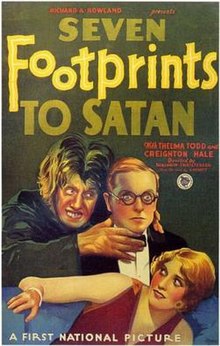
The Magician is a 1926 American silent fantasy horror film directed by Rex Ingram about a magician's efforts to acquire the blood of a maiden for his experiments to create life. It was adapted by Ingram from the 1908 novel The Magician by W. Somerset Maugham. It stars Alice Terry, Paul Wegener and Iván Petrovich. Critic Carlos Clarens wrote that it was "perhaps the most elusive of lost films." However, since the time Clarens wrote this, various prints of the film have surfaced. Some have screened at independent movie festivals from 1993 onwards, and the film has also been shown on Turner Classic Movies. It remained commercially unavailable until being released on DVD in the Warner Brothers Archive Collection in 2011.
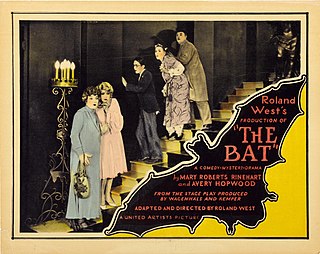
The Bat is a 1926 American silent comedy mystery film directed by Roland West and starring Jack Pickford and Louise Fazenda. The film is based on the 1920 Broadway hit play The Bat by Mary Roberts Rinehart and Avery Hopwood.

The Last Warning is a 1928 sound part-talkie American mystery film directed by Paul Leni, and starring Laura La Plante, Montagu Love, and Margaret Livingston. In addition to sequences with audible dialogue or talking sequences, the film features a synchronized musical score and sound effects along with English intertitles. The film apparently only survives in a cut-down edited silent version which was made for theaters that had not yet converted to sound. The soundtrack for the sound version, which was also released on sound-on-disc format, survives in private hands on Vitaphone type discs.

The Last Performance is a 1929 American sound part-talkie film directed by Paul Fejos and starring Conrad Veidt and Mary Philbin. In addition to sequences with audible dialogue or talking sequences, the film features a synchronized musical score and sound effects along with English intertitles. The soundtrack was recorded using the Western Electric sound-on-film system. The talking sequences were featured on the last reel.
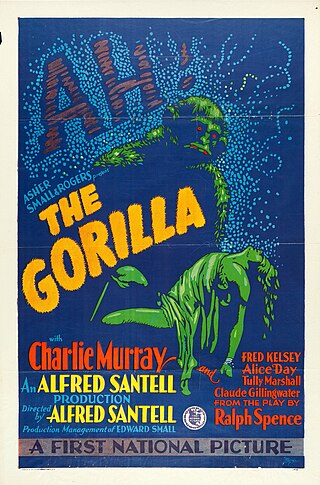
The Gorilla is an American 1927 silent mystery film directed by Alfred Santell based on the play The Gorilla by Ralph Spence. It stars Charles Murray, Fred Kelsey, and Walter Pidgeon.
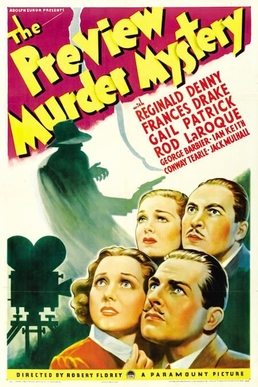
The Preview Murder Mystery is a 1936 American comedy mystery film directed by Robert Florey and starring Reginald Denny, Frances Drake and Gail Patrick. It was produced and distributed by Paramount Pictures. The plot follows a studio public relations man who attempts to trap a killer using television technology, allowing on-screen glimpses of technicians like Florey's cinematographer Karl Struss.

The Haunted House is a 1928 American mystery film directed by Benjamin Christensen. While the film has no audible dialog, it was released with a synchronized musical score with sound effects using the sound-on-disc Vitaphone process. The film stars Larry Kent and Thelma Todd and is based on Owen Davis's 1926 Broadway play of the same name. UCLA Film and Television Archive has copies of the Vtaphone sound discs but not the film, which remains lost.
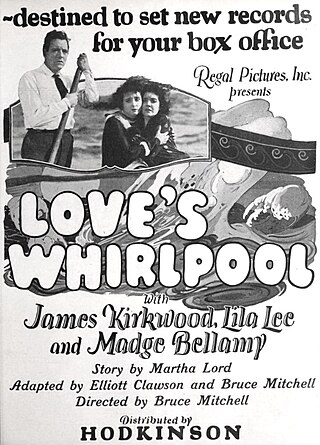
Love's Whirlpool is a 1924 American silent crime drama film directed by Bruce Mitchell and starring James Kirkwood and Lila Lee.
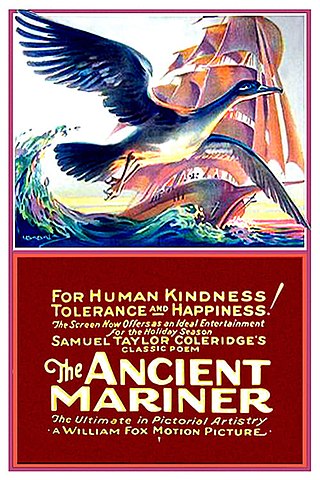
The Ancient Mariner is a 1925 American silent fantasy drama film based on the popular 1798 poem, The Rime of the Ancient Mariner by Samuel Taylor Coleridge. The film was directed by Henry Otto and Chester Bennett, and it was adapted for the screen by Eve Unsell. The film stars Clara Bow, Gladys Brockwell, Nigel De Brulier and was distributed by Fox Film Corporation. The film is presumed to be lost.
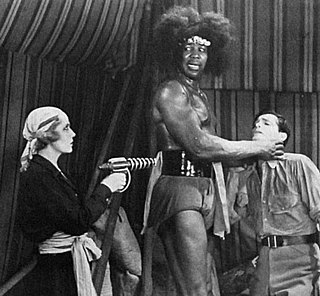
Sam Baker, born Samuel D. Baker, was an American actor who usually performed with Rudolph Valentino, Ramon Novarro, Harold Lloyd and Charlie Chaplin.
The Curious Conduct of Judge Legarde is a 1915 American drama silent black and white film directed by Will S. Davis. It is based on the play of the same name by Victor Mapes and Louis Forest. The film is lost.
Marcel Le Picard (1887–1952) was a French cinematographer known for his work on American films. He shot around two hundred films between 1916 and 1953. He did much of his prolific work for low-budget studios such as Republic Pictures, Monogram Pictures and Producers Releasing Corporation.

Trilby is a 1923 American silent drama film directed by James Young and starring Andrée Lafayette, Creighton Hale, and Arthur Edmund Carewe. It is an adaptation of the 1894 novel Trilby by George du Maurier about a young woman named Trilby who falls under the power of the domineering mesmerist Svengali.

The Thirteenth Chair is a 1919 American silent mystery film directed by Léonce Perret and starring Yvonne Delva, Creighton Hale and Marie Shotwell. It was based on a play of the same name by Bayard Veiller. Subsequent film adaptations were made in 1929 as The Thirteenth Chair and 1937 again under the same title.
Philip Hatkin was a Latvia-born cinematographer who worked in Hollywood during the early silent era. He shot dozens of films between 1915 and 1921. He frequently collaborated with directors like George Archainbaud and Harley Knoles.
A. H. Fischer Features was a film production company. B. A. Rolfe worked on some of its films. Charles A. Logue was the company's secretary.
Jere F. Looney was a writer for several American silent films.

When a Man Loves is a 1919 American silent drama film directed by Chester Bennett and starring Earle Williams, Tom Guise and Margaret Loomis.
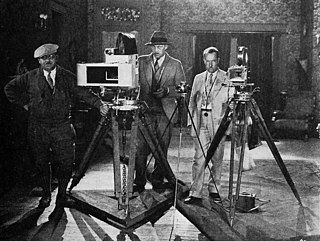
William S. Adams (1892–1930) was an American cinematographer of the silent era. He was the younger half-brother of J. Stuart Blackton, the British born film pioneer and co-founder of Vitagraph Studios. Adams worked with Blackton several times, but was also employed by other companies. He developed a reputation as a specialist in aerial photography, but his career was cut short when he died of a tropical disease at the beginning of the sound era.
Arthur Reeves (1892–1954) was an American cinematographer active in the silent and early sound era. He began his career at the Chicago-based Essanay and went on to work for a variety of other studios including Metro, Universal and FBO Pictures.
